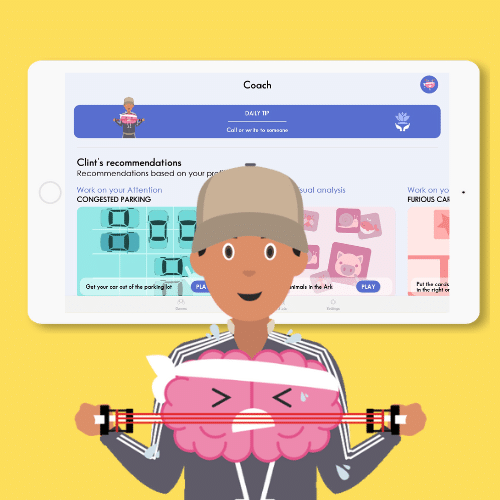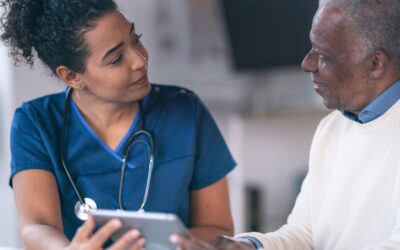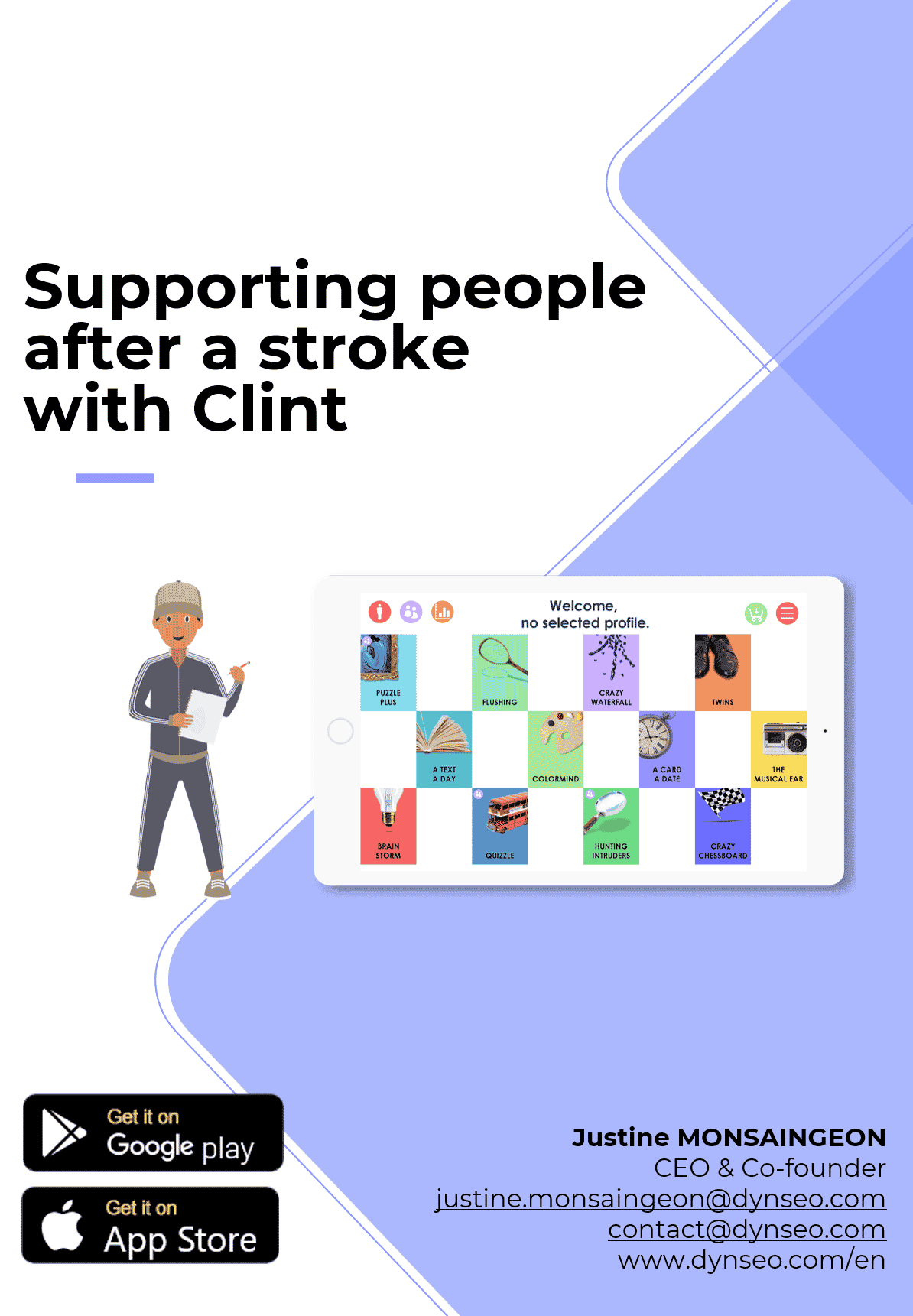Strokes can happen suddenly even though you are perfectly healthy. Nevertheless, it is important to quickly take care of the person who has just suffered a stroke. This will ensure that the person has as fewer after-effects as possible! Ready to find out more? Let’s get started!
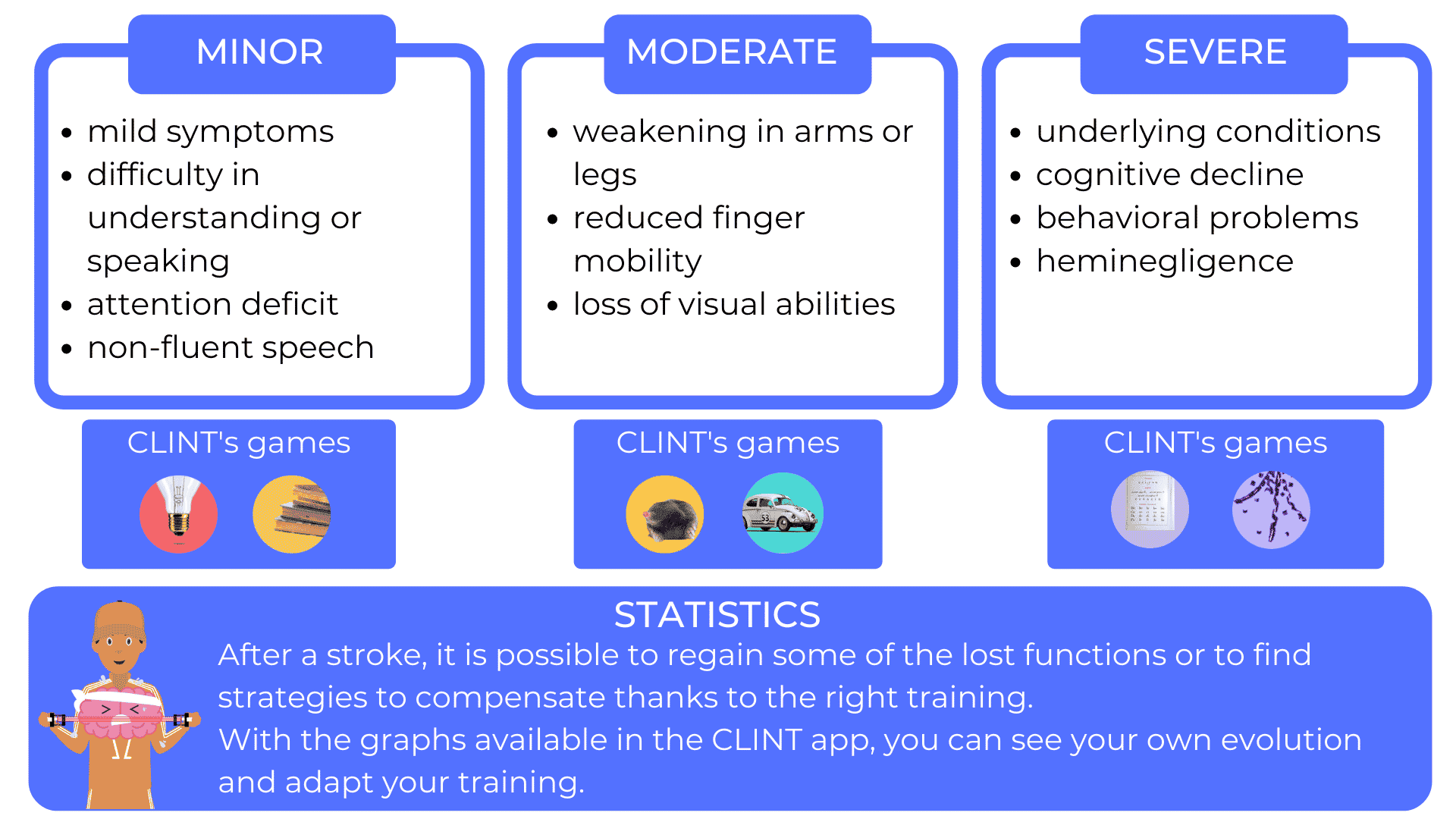
What is a stroke?
A stroke is a cerebral vascular accident and occurs when the blood flow to a part of the brain meets an obstacle. Depending on the area of the brain affected and the severity of the damage, there are different types of stroke.
Ischemic strokes occur when a blood clot blocks a blood vessel in the brain. Hemorrhagic strokes occur when there is a rupture of an artery. Finally, we speak of Transient Ischemic Attack (TIA) when a clot temporarily blocks an artery.
Depending on the type of stroke, there may be different after-effects. For example, in a TIA the after-effects often last only a few hours. However, it should not be underestimated since it can be a sign of fragility and a possible more severe stroke in the future.
What are the consequences of a stroke?
When a person has just had a stroke, it is important to know that there are many possible after-effects. The following is a list of some of these that are important to consider:
- Motor sequelae: this may cause difficulty in moving one or more limbs, paralysis or insensitivity on one side of the body.
- Difficulty swallowing.
- Behavioral problems: this affects mood, concentration or memory, for example.
- Balance problems: rehabilitation or adapted furniture may be required.
- Language disorders: generally, this can be resolved with speech therapy.
- Significant fatigue.
Of course, after a stroke, it is perfectly possible for a person to experience other pains. These should be diagnosed and treated as soon as possible.
What to do after a stroke?
Depending on the disorders and after-effects present, different health professionals must be involved. Often the care of a patient following a stroke is multidisciplinary. We can call upon a physiotherapist, a psychologist, a speech therapist, an occupational therapist…
Nevertheless, when a person has a stroke, there may be factors that prevent a good recovery. Here is a list of these:
- Rapid patient management.
- Age: the younger a person is, the less likely he or she is to have after-effects.
- Good general health, before the stroke occurred.
- The presence of a solid family support.
- Good morale.
Morale can be improved through games, for example with the Clint app, which offers more than 30 fun and cultural games. This application has been specially developed for post-stroke brain training.
The CLINT app, adapted for rehabilitation after a stroke
A brain training program including more than 30 memory games adapted to prevent neurodegenerative disorders, that can be used following a stroke, or to stimulate memory on a daily basis.
Follow the evolution and progress of the player within the application and customize the training as you go along.
- A simple interface,
- 3 levels of difficulty per game,
- No WiFi required
Try the application for free during 1 week, on all tablets and smartphones, Android and Apple!
Brainstorm
Put the words in the right order to find the proverb.
With this game, you are mainly stimulating language. The person has to read and understand the words, then analyze them. Finally he has to put them in the right order to create the proverb. By being known proverbs, the person must try to find in his vocabulary the knowledge of the proverb.
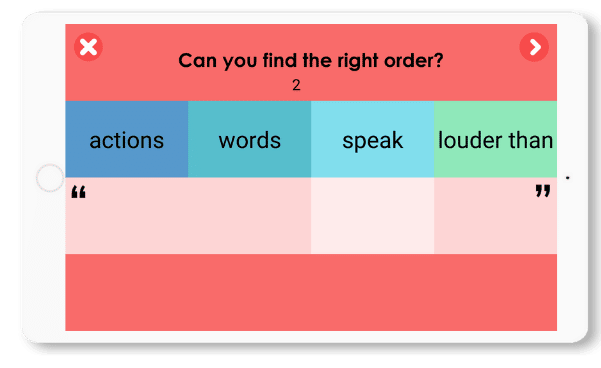
Congested parking
Move the cars in the parking lot to get the yellow car out.
With this game, you can stimulate all the cognitive functions essential to regain independence. The person has to use his visual perception skills to analyze the position of the cars, their size and orientation in order to move them. Then, mental images must be created to imagine the possible movements of the cars and their consequences. In addition, to solve this puzzle and find the right sequence of movements to get the yellow car out, you also stimulate logic and planning.
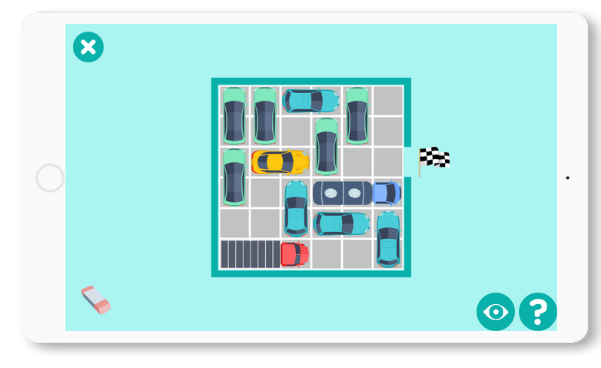
Crazy Waterfall
Find the differences between the proposed combination of symbols and the pattern.
With this game, you stimulate the attention since the person has to compare a sequence with a model within a given time. To recognize the differences between the combination and the model, you stimulate visual perception. The symbols in the game do not have a precise meaning, so the person has to really analyze the characteristics of each image.
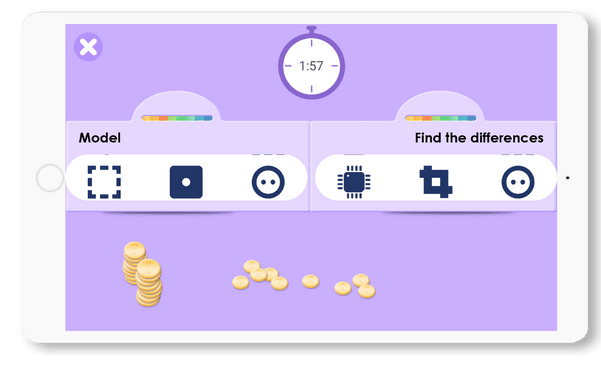
The Rolling Ball, the application for motor skills
We have just seen an application for cognitive stimulation, but we know that following a stroke there can also be motor sequelae. The Marble that Rolls is an application that allows to work on fine motor skills and on the muscle tone of the arms, hands and fingers. Indeed, the person must hold the tablet with both hands and tilt it according to the objective of the game.
Follow the line
Tilt the tablet to make the ball follow the line on the screen.
This game stimulates visual perception since the person must analyze the orientation of the line (useful especially in cases of hemineglect). In addition, we work on the modification of the muscular tone to tilt the tablet and make the marble move in the right direction and at the right speed.
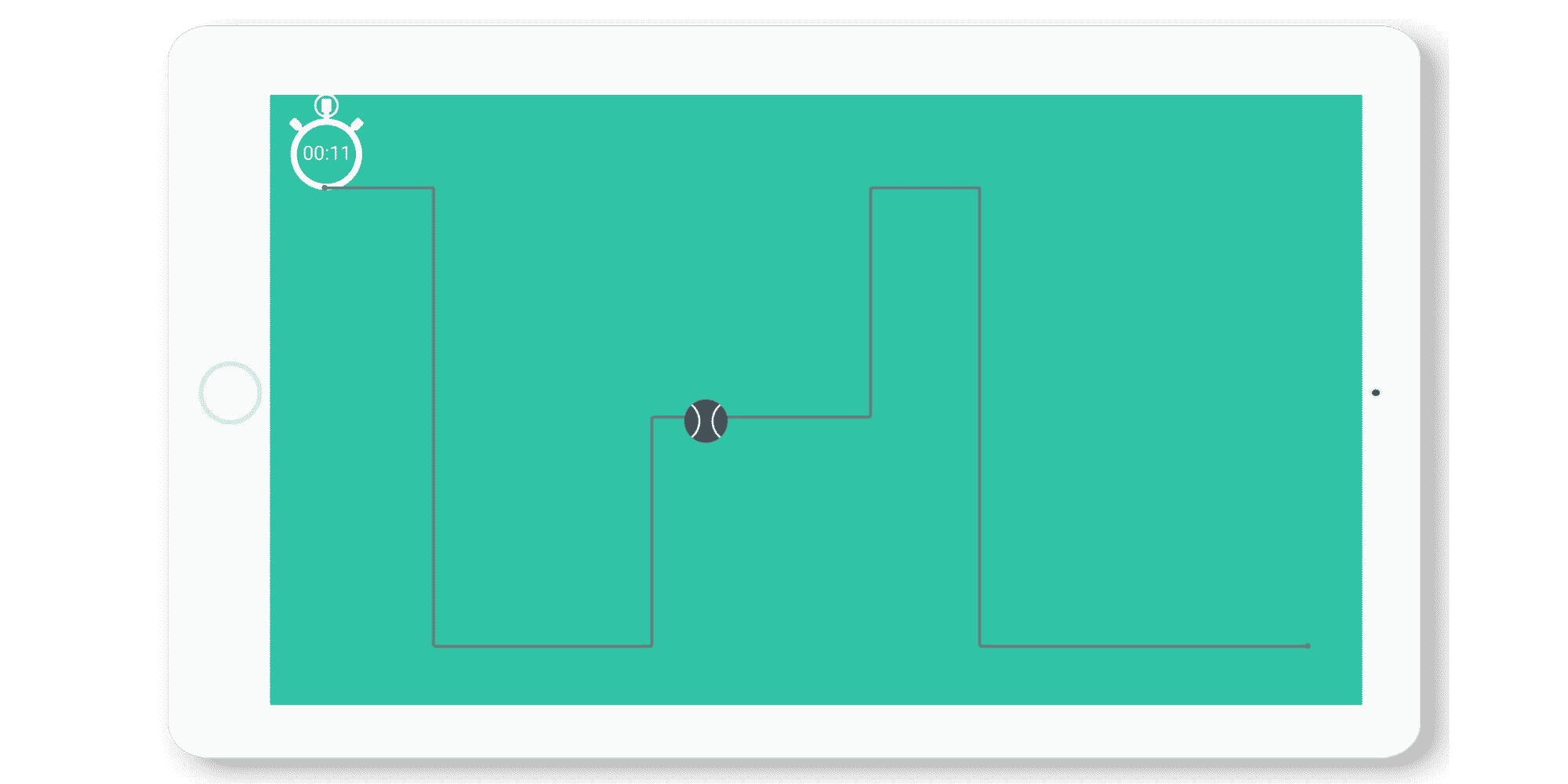
Wind resistance
Keep the ball in the center area and watch out for the wind pushing you to the sides.
This game is very useful in case of hemineglect since the wind can come from the right or the left so the person has to practice to explore his whole field of vision.
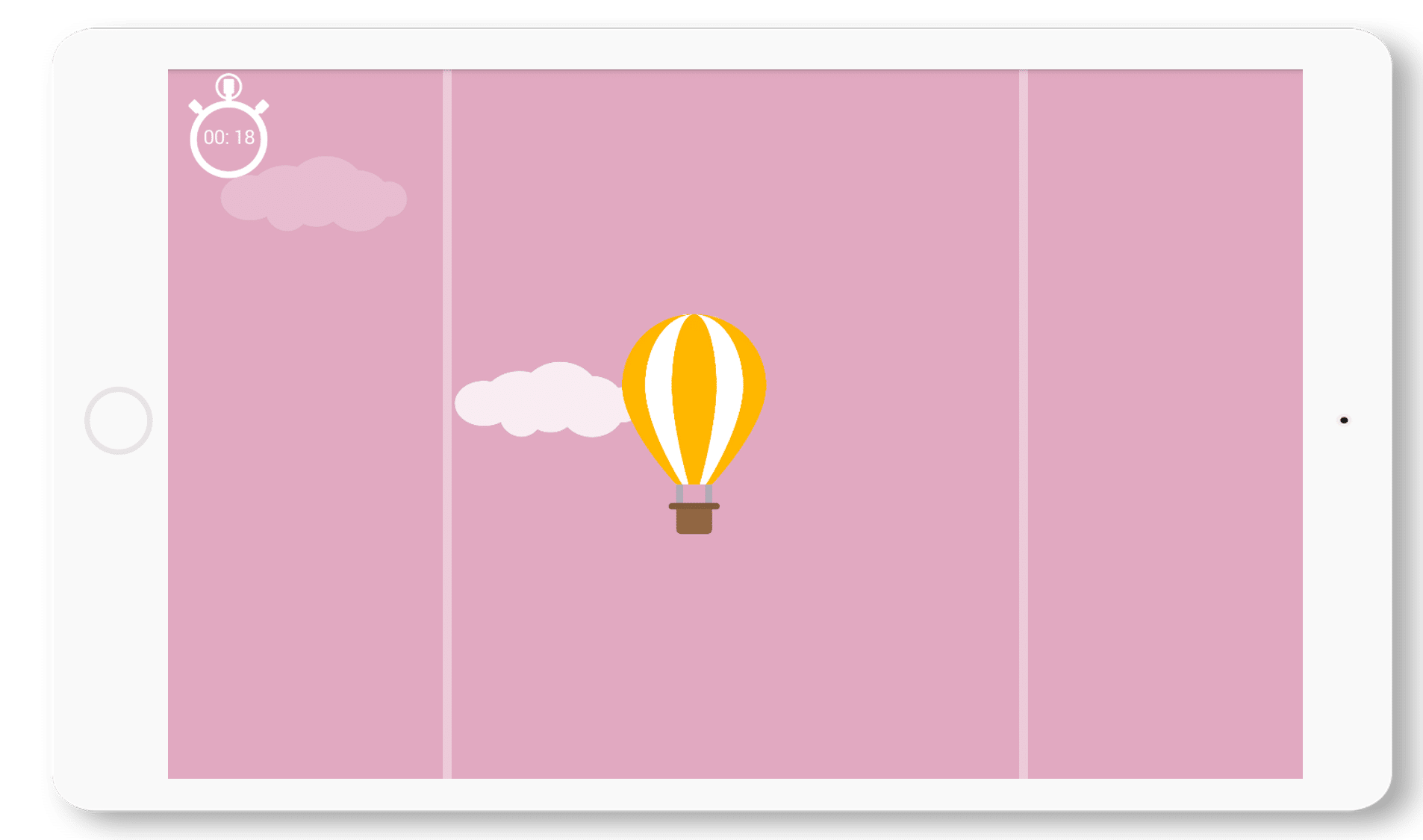
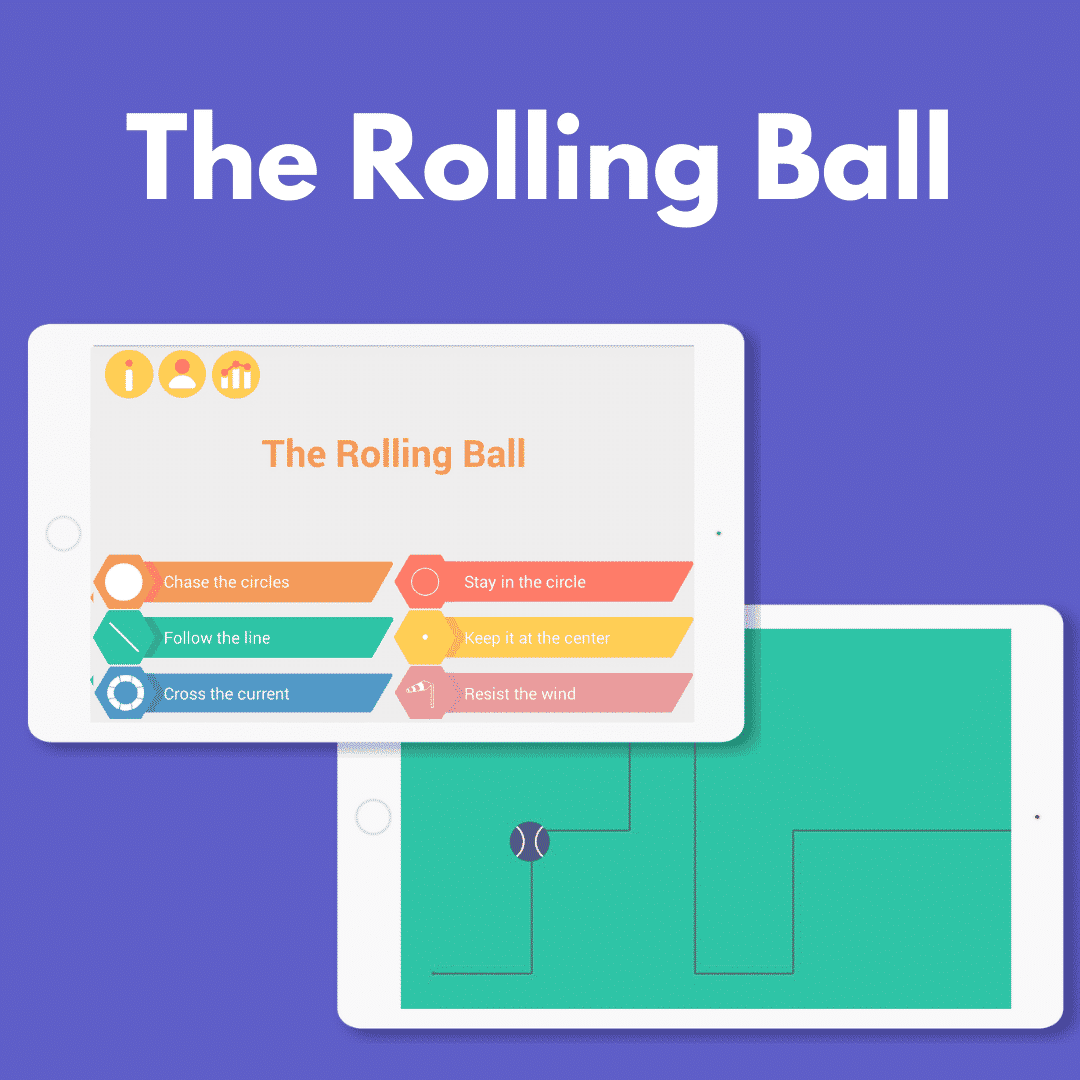
How to prevent a stroke?
Even if strokes often happen without notice, it is possible to prevent it. In fact, here is a list of all the actions you can take to avoid a stroke:
- Check for high blood pressure,
- check your diabetes levels,
- avoid smoking,
- treat your cholesterol.
It’s also important to consider that there are some signs that can really alert you before your stroke. If you feel like you have no strength in one side of your body, like you have difficulty speaking or you have visual impairment, this may be a sign that you are at risk for a stroke. If you feel weak or want to ask about it, call your practician so you can have a professional opinion on what best to do.
Strokes are often sudden and not expected. Nevertheless, if you can spot the different warning signs, it could only be beneficial.
Other articles you might be interested in:
Reconstructing After Stroke: Redefining Identity and Goals.
A stroke is a serious medical condition that occurs when blood flow to the brain is interrupted, causing damage to...
The Different Types of Stroke Explained: Ischemic, Hemorrhagic and TIA.
A stroke is a serious medical condition that occurs when blood flow to a part of the brain is interrupted or reduced,...
Preventing Stroke Recurrence: Measures and Lifestyle Changes.
A stroke is a serious medical condition that occurs when blood flow to the brain is interrupted, causing damage to...


